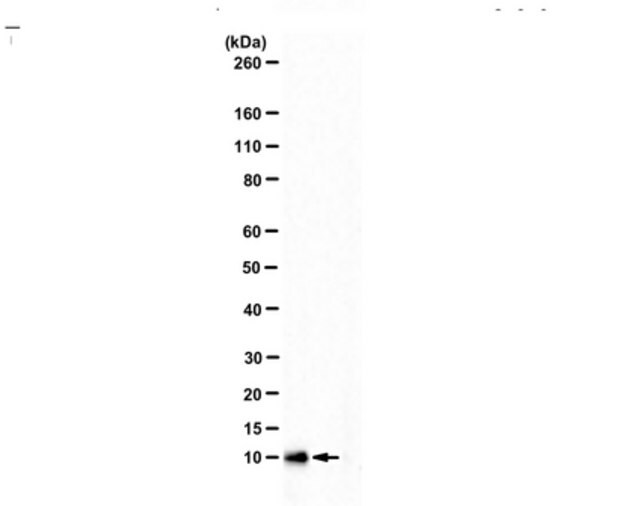您的位置:首页 > 产品中心 > Anti-Uteroglobin
产品别名
Anti-Uteroglobin
Clara cell phospholipid-binding protein, CCPBP, Clara cells 10 kDa secretory protein, CC10, PCB-binding protein, Secretoglobin family 1A member 1, Blastokinin
基本信息
| eCl@ss | 32160702 |
| General description【一般描述】 | Uteroglobin (UniProt: P17559; also known as Clara cell phospholipid-binding protein, CCPBP, Clara cells 10 kDa secretory protein, CC10, PCB-binding protein, Secretoglobin family 1A member 1, Blastokinin) is encoded by the Scgb1a1 (also known as Cc10, Ugb, Utg) gene (Gene ID: 25575) in rat. Uteroglobin, is a member of the Secretoglobin superfamily that serves as a multifunctional protein and can exert anti-inflammatory and anti-tumorigenic effects by binding small hydrophobic molecules. Uteroglobin is synthesized with a signal peptide of 19 amino acids and consists of a disulfide-linked dimer of two identical polypeptides, each polypeptide being composed of four helices. Uteroglobin derives its name from its high levels of expression in pre-implantation embryos, where it exhibits growth stimulatory effects. It is produced and secreted by the non-ciliated, non-mucous Clara cells predominant in the epithelial surfaces of pulmonary airways. It plays a role in sequestering pro-inflammatory mediators and carcinogens and has been implicated in the inhibition of cell migration and invasion. It inhibits soluble phospholipase A2 activity and binds and perhaps sequesters hydrophobic ligands such as progesterone, phospholipids, prostaglandins, and retinols. Uteroglobin positive (Scgb1a1+) cells in different regions of the lung differ in their role as progenitors in vivo. For example, in the bronchioles, these cells can both self-renew and generate ciliated cells during postnatal growth and adult homeostasis. On the other hand, in the trachea, the majority of uteroglobin positive cells constitute a transient amplifying population during postnatal growth and steady state, and their capacity for self-renewal and multi-lineage differentiation increases in response to injury. (Ref.: Mukherjee, AB et al. (2007). Endocrine Rev. 28(7): 707-725). |
| Specificity【特异性】 | This polyclonal antibody detects uteroglobin in mouse and rat tissues. |
| Immunogen【免疫原】 | His-tagged full length recombinant rat uteroglobin. Epitope: unknown |
| Application【应用】 | Detect Uteroglobin using this goat polyclonal Anti-Uteroglobin Antibody, Cat. No. ABS1673 that has been tested in Immunofluorescence, immunohistochemistry, and Western blotting. Research Category Signaling Immunofluorescence Analysis: A representative lot detected Uteroglobin in dedifferentiated cells (Tata, P.R., et. al. (2013). Nature. 503(7475):218-23) and mice E18.5 lung tissue (Hashimoto, S., et. al. (2012). J Cell Sci. 125(Pt 4):932-42). Immunofluorescence Analysis: A 1:1,000 dilution from a representative lot detected Uteroglobin in mouse lung tissue. (Courtesy of Dr.Barry Stripp at Cedars-Sinai Medical Center, Los Angeles, CA). Immunohistochemistry Analysis: A representative lot detected Uteroglobin in adult mice alveoli (Rawlins, E.L., et. al. (2009). Cell Stem Cell. 4(6):525-34). |
| Quality【质量】 | Evaluated by Western Blotting in mouse lung tissue lysate. Western Blotting Analysis: A 1:500 dilution of this antibody detected Uteroglobin in 10 µg of mouse lung tissue lysate. |
| Physical form【外形】 | Goat polyclonal antiserum with 0.05% sodium azide. Unpurified |
| Other Notes【其他说明】 | Concentration: Please refer to lot specific datasheet. |
产品性质
| Quality Level【质量水平】 | 100 |
| biological source【生物来源】 | goat |
| antibody form【抗体形式】 | serum |
| antibody product type | primary antibodies |
| clone【克隆】 | polyclonal |
| species reactivity | mouse |
| species reactivity (predicted by homology) | rat (based on 100% sequence homology) |
| technique(s) | immunofluorescence: suitable immunohistochemistry: suitable western blot: suitable |
| NCBI accession no.【NCBI登记号】 | NP_037183 |
| UniProt accession no.【UniProt登记号】 | P17559 |
| shipped in【运输】 | ambient |
产品说明
| Target description【目标描述】 | ~10 kDa observed; 10.45 kDa calculated. Uncharacterized bands may be observed in some lysate(s). |
| Storage and Stability【储存及稳定性】 | Stable for 1 year at -20°C from date of receipt. Handling Recommendations: Upon receipt and prior to removing the cap, centrifuge the vial and gently mix the solution. Aliquot into microcentrifuge tubes and store at -20°C. Avoid repeated freeze/thaw cycles, which may damage IgG and affect product performance. |
| Disclaimer【免责声明】 | Unless otherwise stated in our catalog or other company documentation accompanying the product(s), our products are intended for research use only and are not to be used for any other purpose, which includes but is not limited to, unauthorized commercial uses, in vitro diagnostic uses, ex vivo or in vivo therapeutic uses or any type of consumption or application to humans or animals. |
安全信息
| Storage Class Code【储存分类代码】 | 12 - Non Combustible Liquids |
| WGK | WGK 1 |







